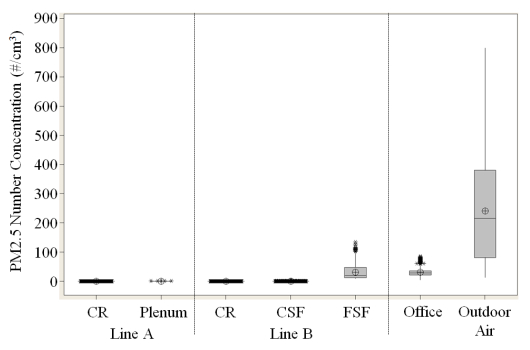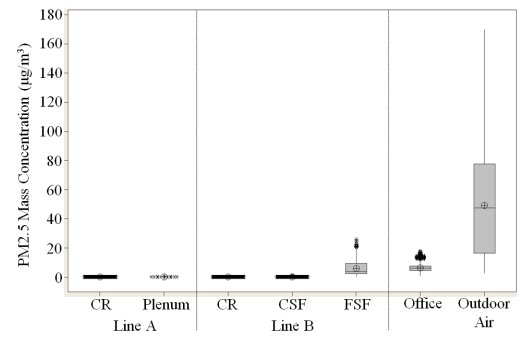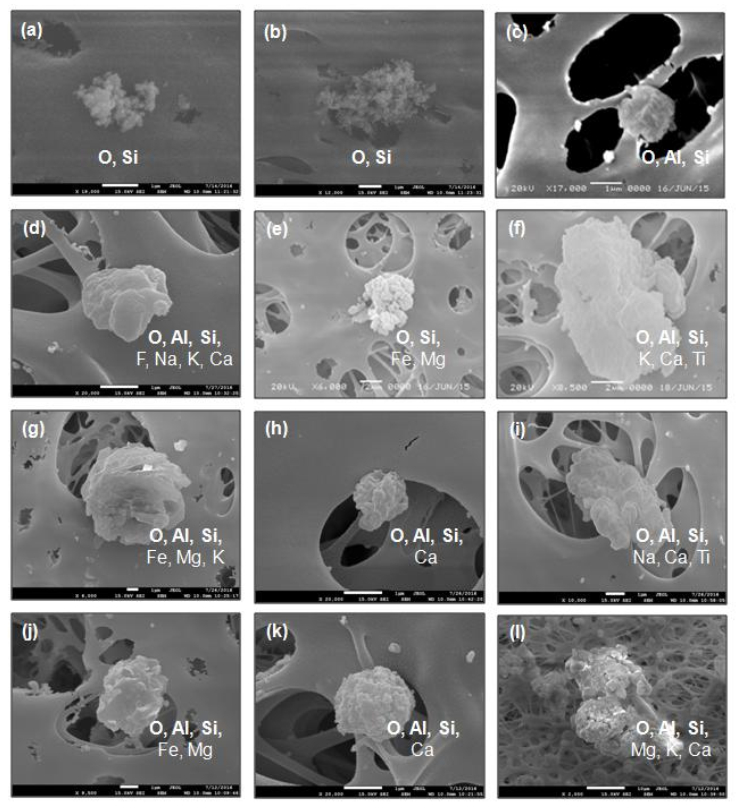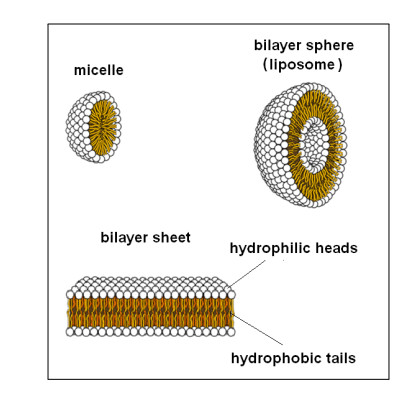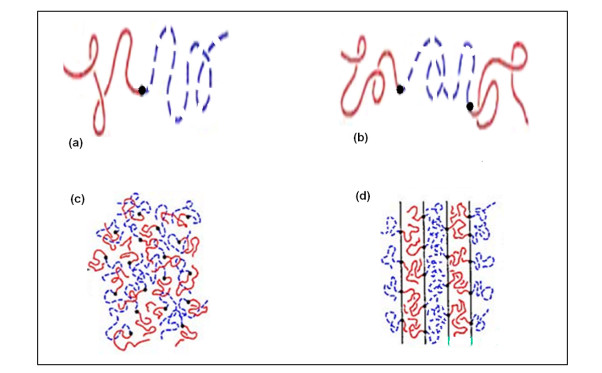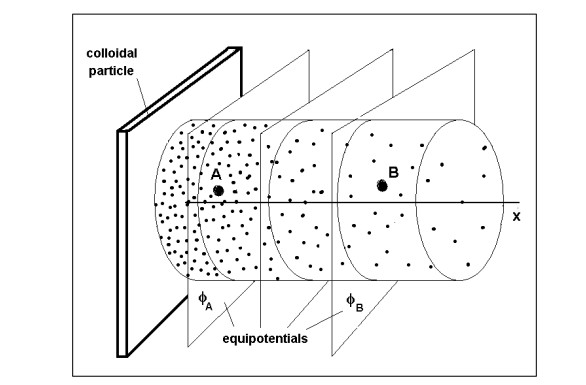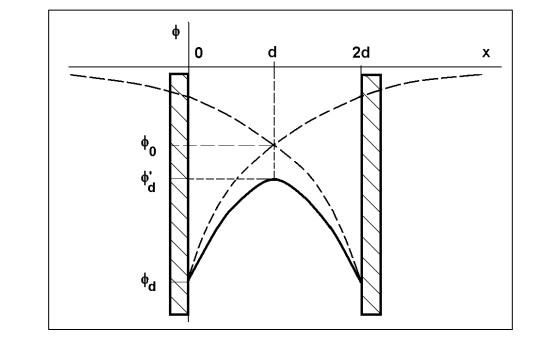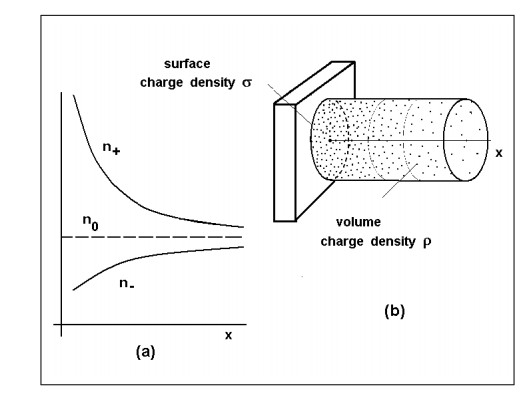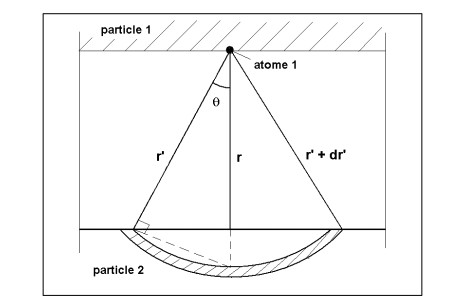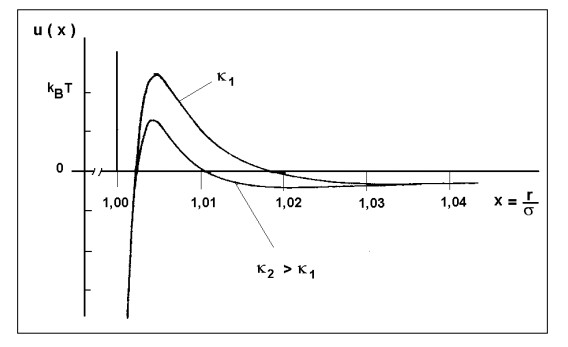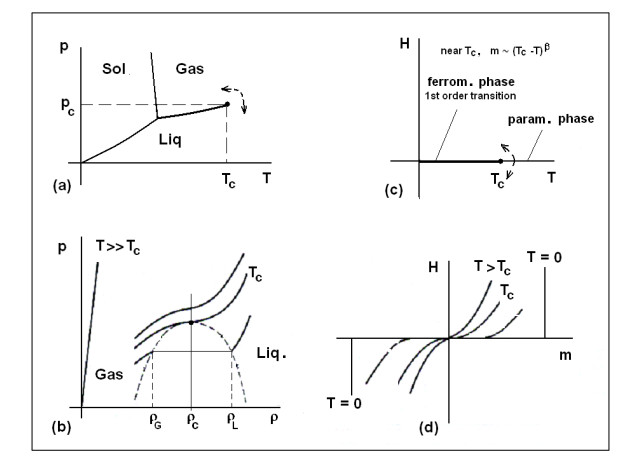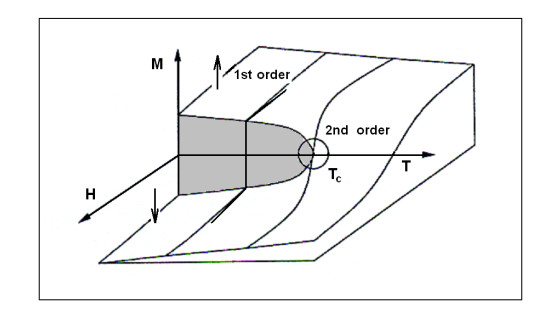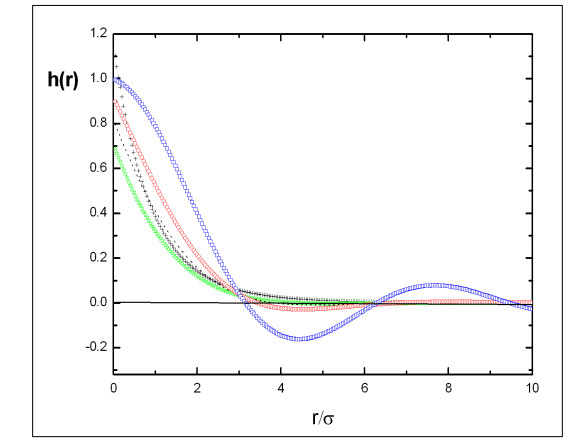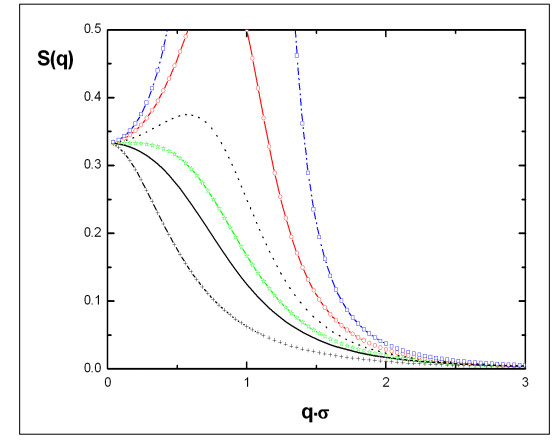1. Introduction
It has been known that excess exposure to airborne particulate matter (PM) may cause adverse health effects in human [1,2,3]. The most health-damaging particles are those with a diameter of 10 µm or less, which can penetrate and lodge deeply inside the lungs [1]. Chronic exposure to particles contributes to the risk of developing cardiovascular and respiratory diseases, as well as of lung cancer [2]. A 2013 assessment by International Agency for Research on Cancer (IARC), the specialized cancer agency of the World Health Organization (WHO), concluded that outdoor air pollution is carcinogenic to humans (Group 1), with the PM components of air pollution most closely associated with increased cancer incidence, especially cancer of the lung [4]. As the adverse health effects of PM10 (particulate matter of less than 10 µm in diameter) are already known [5,6], the health risks associated with exposure to PM2.5 (particulate matter of less than 2.5 µm in diameter) are being extensively studied. To date, it has been reported that exposure to PM2.5 affects cerebrovascular and cardiovascular diseases, arrhythmia, cardiac insufficiency, chronic obstructive pulmonary disease, and respiratory system infection [7,8,9,10,11]. In addition, it is known that differences in toxicity are dependent on the chemical composition, size, surface area, shape, and crystal structure of the metal oxide particles [3,12,13].
The semiconductor industry is one of the fastest growing and most rapidly changing manufacturing sectors in the world. The use of diverse and complicated chemical substances to produce semiconductors is indispensable [14,15]. Most of the items of semiconductor manufacturing equipment are closed, and the chemicals used in the process are removed by exhaust ventilation systems. In addition, as for the major processes in low-pressure (vacuum) conditions, the chamber inside of the equipment is cleaned through an in-situ process using NF3 plasma, and the reaction residue is eventually removed [16,17]. However, despite the use of exhaust ventilation systems, it is impossible to completely remove the chemicals and by-products from the equipment inside. Process and/or product defects by air diffusion and cross-contamination of the process chemicals and their by-products are prevented by operating local exhaust ventilation systems during maintenance of the process equipment.
Herein, it is important not to overlook the generation of powders and airborne PM as by-products by chemical reaction of the metal precursors used as process materials during normal operation process, and their release into the workplace, as maintenance activity of the process equipment and scrubber (which can be used to remove some particulates and/or gases from industrial exhaust streams) can result in worker exposure and inhalation. Therefore, identification of the physicochemical characteristics of the powder by-products and airborne PM in work environment can play an important role in the field of industrial hygiene. This study aimed to investigate the concentrations and physicochemical properties (such as concentration, elemental component, size, and morphology) of airborne PM2.5 in the semiconductor manufacturing facilities, based on the precautionary principle.
2. Semiconductor manufacturing environment
2.1. Semiconductor fabrication facility and air handling system
200 mm and 300 mm wafer fabrication facilities are divided into fab (CR) and plenum; and fab, clean sub fab (CSF), and facility sub fab (FSF); respectively (Figure 1a, b). Herein, fab means a clean room (CR) where semiconductor process is operating, and an area in which the operation and maintenance of process equipment is performed. Meanwhile, plenum, CSF, and FSF are areas that provide equipment to process the chemicals needed for wafer fabrication. Also, it houses accessory equipment, such as pump, chiller, and scrubber for the treatment and exhaustion of excess chemicals.
Fresh air is supplied in the plenum or CSF by the outdoor air handling unit (OAHU) system, which purifies outdoor air (Figure 1c). FA supply rates of the 200 and 300 mm wafer fabrication facilities are approximately 10 and 25%, respectively. Furthermore, air handling and contamination control systems strictly control semiconductor clean rooms for airborne particles, temperature, humidity, air velocity, air change, vibration, and differential pressure. In addition, acids, alkalis, and ozone are controlled by chemical filters. Based on the International Organization for Standardization (ISO) 14644-1, the number concentrations of airborne particles in the 200 and 300 mm wafer manufacturing facilities under process operation conditions (except for maintenance) are controlled to be ≤1 × 102 #/m3 and ≤1 × 105
#/m3, respectively, at a particle size of 0.1 µm and over [18,19].
2.2. Semiconductor fabrication process
Generally, the semiconductor fabrication processes include photolithography (PHOTO), dry etching (ETCH), cleaning (CLN), metallization (METAL), chemical vapor deposition (CVD), diffusion (DIFF), ion implantation (IMP), and chemical mechanical polishing (CMP) [14,15]. The entire manufacturing process consists of 400 to 500 steps, according to the specific semiconductor device; most devices require multiple steps through the same processes, at different stages.
3. Method
3.1. Sampling sites
This study was conducted in two semiconductor fabrication facilities in Korea that produce 200 and 300 mm wafers, respectively, and their areas are approximately 8400 and 15,600 m2, respectively. Herein, each fabrication facility is generally called "line". The sampling sites were the CR, plenum, CSF, and FSF of the two lines (Figure 1a, b). Generally, the layout of the process equipment in the CR is divided into four sections, and the ETCH, PHOTO, METAL/CVD, and DIFF processes, and the CLN process, are located in these sections. In this study, ETCH, PHOTO, DIFF, METAL, CVD, and CLN were selected among the various semiconductor manufacturing processes. In addition, office and outdoor air were included in the measurement target for comparative analysis with semiconductor work places.
3.2. Sampling collection and analysis
Measurements of airborne PM2.5 concentrations (e.g., number and mass) and size distribution were carried out by optical particle sizer (OPS, TSI 3330, TSI Inc., Shoreview, MN, USA), which is capable of counting particle sizes in two size ranges from 0.3 to 2.5 µm, i.e., 0.3–1.0 µm and 1.0–2.5 µm, for 6 hours (9:30 a.m.–3:30 p.m., based on workers' core working hours) at a flow rate of 1.0 L/min, during operation of process equipment and scrubber. The detection limits of the number and mass concentration of the OPS are 0.001 #/cm3 and 0.001 µg/m3, respectively. To approximate the conditions of exposure, all airborne PM2.5 measurements and samplings were conducted within 0.2–0.5 m from each item of process equipment and scrubber at about 1.0–1.2 m above floor level. Twenty-five samples (CR (8), Plenum (4), CSF (5), and FSF (8)) were taken around major items of process equipment and scrubber during normal operation conditions. In addition, the measurement of airborne PM2.5 in the office and outdoor air were carried out under the same measurement conditions, except for the measurement in outdoor air, which was performed at about 25 m above ground, and the concentrations were compared to those of the airborne PM2.5 in the CR, plenum, CSF and FSF. The number of samples in the office and outdoor air was eleven and six, respectively.
In order to identify the elemental component, size, and shape of the airborne PM, samples were collected by airborne area sampling, which was performed for 30 min at a 2.0 L/min flow rate, using pre- and post- calibrated air sampling pumps (GirAir3, Gilian, Sendidyne Inc., Clearwater, FL, USA) connected with a polycarbonate membrane filter (pore size 0.22 µm, diameter 37 mm, Millipore, Bedford, MA, USA) in a 3-piece 37 mm cassette (225-3LF, SKC Inc. Eighty Four, PA, USA). Forty-nine samples (CR (16), Plenum (8), CSF (8), FSF (8), Office (4), and Outdoor Air (5)) were taken under the same sampling conditions. The elemental component, size, and morphology of the airborne PM were determined by SEM (JSM-7001F, JEOL, Tokyo, Japan) equipped with energy dispersive spectroscopy (EDS, INCA 2000, Oxford Instruments, Abingdon, Oxfordshire, UK). Before SEM-EDS analysis (accelerating voltage: 15–20 kV, magnification: 2,000–20,000X magnification), the PVC membrane filters (airborne PM is collected on the filter surface) were coated with 20 nm of gold (Au), using a sputter coater (Cressington 108 auto, Cressington Scientific Instrument Ltd., England, UK) for 120 s at 37 mA to form electro-conductive film.
4. Results and discussion
4.1. Number concentration
Figure 2 shows the number concentrations of the airborne PM2.5 measured with the OPS in the semiconductor fabrication facilities during normal operation conditions. The PM2.5 concentrations in the CR and plenum for line A (the 200 mm wafer fabrication facility) ranged ND-0.288 #/cm3 and ND-0.540 #/cm3, respectively. On the other hand, for line B (the 300 mm wafer fabrication facility), the concentrations in the CR, CSF, and FSF ranged ND-0.048 #/cm3, ND-4.766 #/cm3, and 9.261–134.088 #/cm3, respectively.
The reason for the relatively high PM2.5 concentration in the FSF compared to those in the CR, plenum, and CSF can be explained in terms of the semiconductor fabrication facility structure and the heating, ventilation, and air conditioning system (Figure 1c). After being put into the outdoor air handling unit (OAHU), the air is transferred to the plenum or CSF, before the entry of the outdoor airborne particles into the CR. The purified particles are then supplied to the CR through the ultra-low penetration air filter (removal efficiency of airborne particles based on 0.1 µm diameter: 99.99995%). Therefore, most particles greater than 0.1 µm in the air are removed, and the particle levels in the CR are very low (airborne particle management criteria: line A, 1 × 102 #/m3; and line B, 1 × 105 #/m3).
For FSF in line B, even though the outdoor airborne particles are purified the same through OAHU, the controlled airborne particle size and its removal efficiency, and air circulation process are different from those of the OAHU adjusted in the CR (Figure 1c). Herein, the removal efficiencies of airborne particle of the pre- and medium filters in the OAHU system for the FSF are more than 80 and 90% based on 10 and 0.5 µm diameter, respectively. The periodic replacements of the filters are 3 and 6 months, respectively. In addition, the water showering system (WSS) and high efficiency particulate air (HEPA) filter are not adjusted in the OAHU system for the FSF. Meanwhile, PM can be generated and released to the FSF, because workers in the FSF do not wear dust-free garments. For these reasons, the PM level in the FSF is relatively high, compared to that in the CR, plenum and CSF.
On the other hand, the number concentrations of PM2.5 in office of the semiconductor industry ranged 4.562–85.336 #/cm3 with a mean 30.199 #/cm3, and appeared to be similar to that in the FSF. Herein, the concentrations of PM2.5 in the office and the FSF were demonstrated to be partially affected by the outdoor airborne particles concentration. Airkorea (www.airkorea.or.kr) of the Korea Environment Corporation provides data and information of the ambient air pollution gathered by the ambient air quality monitoring network on the website in real-time for the public in Korea, and describes the ambient air quality based on the health risk of air pollution. The air quality index for PM10 (PM2.5) is as follows: "Good" (a level that has no impact on disease related to air pollution): 0–30 (0–15) µg/m3;
"Moderate" (a level that may have a meager impact on patients in the case of chronic exposure): 31–80 (16–35) µg/m3; "Unhealthy" (may cause harmful effects for patients, and sensitive people in general can experience unpleasant feelings in health): 81–150 (36–75) µg/m3; and "Very Unhealthy" (may cause serious effects for patients, and sensitive group people in general people can experience harmful effects in health): more than 151 (76)
µg/m3. Meanwhile, for the USA and Korea, the recommended standards of outdoor PM10 and PM2.5 are as follows: The outdoor PM10 and PM2.5 standards recommended by the United States Environmental Protection Agency are 150 and 35 µg/m3, respectively, for 24 hours [20]. Meanwhile, Korea standards by the Ministry of Environment are 100 and 50 µg/m3, respectively, under the same conditions [21].
Table 1 indicates the number concentrations of PM2.5 in the FSF and office according to outdoor air quality based on PM10. When the PM10 level in outdoor air was "Good", the mean concentrations of PM2.5 in the FSF and office were 12.821 #/cm3 and 10.556 #/cm3, respectively. In the case of "Unhealthy", the concentrations were 42.337 #/cm3 and 30.681 #/cm3, respectively. Meanwhile, the number concentrations of PM2.5 for "Good" and "Unhealthy" of the PM10 level in outdoor air were approximately 4–12 times higher than those of the FSF and office.
Table 1. Number concentrations of PM2.5 in the FSF, office, and outdoor air according to outdoor air quality based on PM10.
| Classification |
PM2.5 mean number concentration (range: min-max, unit: #/cm3) |
| FSFc |
Office |
Outdoor Air |
| Gooda |
12.821 ± 1.658
(9.755–17.483) |
10.556 ± 5.543
(4.562–37.538) |
49.289 ± 19.217
(13.075–102.741) |
| Unhealthyb |
42.337 ± 6.697
(25.440–71.310) |
30.681 ± 3.998
(21.894–44.760) |
373.463 ± 75.455
(181.580–550.785) |
| a, b In the case of PM2.5, 0–15 and 36–75 µg/m3, respectively. cFSF: Facility sub fab. |
Table 2 represents the number concentration distributions according to the particle size, e.g., 0.3–1.0 µm and 1.0–2.5 µm in the semiconductor fabrication facilities and the office. For the plenum in line A, the portions of 0.3–1.0 µm particles corresponding to PM1 were 99.33%, respectively, of those of PM2.5, which contains 0.3–2.5 µm particles. It was demonstrated that most of the number concentrations of PM2.5 corresponded to those of PM1. For CSF, and FSF in line B, the proportions of PM1 corresponded to 98.44 and 99.67%, respectively, of PM2.5. In addition, the PM1/PM2.5 ratio in the office was 99.14%, which is similar to those in the CSF and FSF. The results showed that PM1 occupy most of the PM2.5 number concentration, and the PM1/PM2.5 ratios in these facilities were confirmed to have no relation to the PM levels in outdoor air.
Table 2. Number concentrations of PM2.5 according to particle size.
Particle Size
(µm) |
Mean number concentration (#/cm3) |
| Line A |
Line B |
Office |
Outdoor Air |
| CRa |
Plenum |
CR |
CSFb |
FSFc |
| 0.3–1.0 (PM1) |
< DLd |
0.148 |
< DL |
0.063 |
30.812 |
29.939 |
239.486 |
| 1.0–2.5 |
< DL |
0.001 |
< DL |
0.001 |
0.101 |
0.260 |
1.414 |
| PM1/PM2.5 (%) |
- |
99.33 |
- |
98.44 |
99.67 |
99.14 |
99.41 |
| aCR: Clean room. bCSF: Clean sub fab. cFSF: Facility sub fab. dDL: Detection limit (0.001 #/cm3). |
4.2. Mass concentration
Figure 3 shows the mass concentrations of the airborne PM2.5 in the CR, plenum, CSF, and FSF during normal conditions, and in the office. The concentrations in the CR for lines A and B ranged ND-0.053 µg/m3 and ND-0.044 µg/m3, respectively. For the plenum, CSF, and FSF, the concentrations ranged ND-0.299 µg/m3 (mean: 0.029 µg/m3), ND-1.072 µg/m3 (mean: 0.016 µg/m3) and 0.574–25.941 µg/m3 (mean: 5.957 µg/m3), respectively. As mentioned above, for the same reason, the concentration of PM2.5 in the FSF was higher than those in the other fabrication facilities, such as the CR, plenum, and CSF. Meanwhile, the concentration in the office ranged 1.053–17.957 µg/m3, with a mean 6.416 µg/m3 for PM2.5.
Table 3 indicates the mass concentrations of PM2.5 in the FSF and office according to outdoor air quality based on PM10. The mean concentrations of PM2.5 under "Good" and "Unhealthy" situations of the micro-particle level in outdoor air were 10.423 and 76.155 µg/m3, respectively. When the PM10 level in outdoor air was "Good", the PM2.5 concentrations in the FSF and office were 2.525 and 2.346 µg/m3, respectively. In the case of "Unhealthy", the concentrations were 8.419 and 6.340 µg/m3, respectively. The mass concentrations of PM2.5 for "Good" and "Unhealthy" of the PM10 level in outdoor air increased 4–12 fold compared to those of the FSF and office.
Table 3. Mass concentrations of PM2.5 in the FSF, office, and outdoor air according to outdoor air quality based on PM10.
| Classification |
PM2.5 mean mass concentration (range: min-max, unit: µg/m3) |
| FSFc |
Office |
Outdoor Air |
| Gooda |
2.525 ± 0.321
(1.820–5.271) |
2.346 ± 1.131
(1.053–7.847) |
10.423 ± 3.897
(2.840–21.816) |
| Unhealthyb |
8.419 ± 1.409
(4.921–13.644) |
6.340 ± 0.826
(4.375–9.513) |
76.155 ± 14.429
(37.793–110.430) |
| a, bIn the case of PM2.5, 0–15 and 36–75 µg m-3, respectively. e FSF: Facility sub fab. |
Table 4 shows the PM2.5 mass concentrations according to the particle size in the semiconductor fabrication facilities and the office. For the plenum in line A, the particles of 0.3–1.0 µm corresponding to PM1 account for 96.43% of PM2.5, which contains 0.3–2.5 µm particles, respectively. In addition, for the CSF, and FSF in line B, the proportions of PM1 corresponded to 73.00 and 94.38% of PM2.5, respectively. The proportion of PM1 to PM2.5 mass concentration in the office was 86.55%, which is lower than the proportion (99.14%) of PM1 to PM2.5 number concentration. During normal operation conditions, the ULPA filter (removal efficiency: 99.99995% based on 0.1 µm particle) removes most of the airborne particles of more than 0.1 µm in the CR. However, the particles ranging 0.3–2.5 µm can exist in the CSF and FSF by inflow and residue from the outside, internal generation from workers and scrubbers, and so on. It can be speculated that the number concentrations of 1.0–2.5 µm particles in PM2.5 cause a large impact to the mass concentration of PM2.5. Meanwhile, the PM1/PM2.5 ratio and PM concentration are known to be different according to the area, season, and so on [22,23,24,25].
Table 4. Mass concentrations of PM2.5 according to particle size.
| Particle Size (µm) |
Mean mass concentration (µg/m3) |
| Line A |
Line B |
Office |
Outdoor Air |
| CRa |
Plenum |
CR |
CSFb |
FSFc |
| 0.3–1.0 (PM1) |
< DLd |
0.027 |
< DL |
0.012 |
5.622 |
5.553 |
44.421 |
| 1.0–2.5 |
< DL |
0.001 |
< DL |
0.004 |
0.335 |
0.863 |
4.697 |
| PM1/PM2.5 (%) |
- |
96.43 |
- |
75.00 |
94.38 |
86.55 |
90.44 |
| aCR: Clean room. bCSF: Clean sub fab. cFSF: Facility sub fab. dDL: Detection limit (0.001 µg/m3). |
4.3. Chemical composition, size, and morphology
Figure 4 shows the result of the SEM-EDS analysis for identifying the elemental component, size, and morphology of the airborne PM during the normal operation conditions of process equipment and scrubber in lines A and B. For comparison, the airborne particles which sampled in the office and outdoor air were also analyzed. In the case of line A, the particles were determined at only the DIFF process area in the plenum (Figure 4a, b). All particle samples were composed of mostly O and Si, which means silica particles [26,27]. The particles were spherical and nearly spherical based on the primary particle, and bar-shaped particles did not exist [28]. The size ranged approximately 2.0–5.0 µm, which particles are likely to be formed by the agglomeration and/or aggregation of primary particles of less than 100 nm. Meanwhile, none of the particles were observed at the main process areas (i.e., ETCH, PHOTO, DIFF, and METAL) in the CR. For line B, in addition, the particles were observed only in the FSF (METAL, CVD, DIFF, and CLN areas). In all particles, O and Si were detected in common, and also Al, F, Fe, Mg, K, Ca, and Ti elements were intermittently detected according to the samples (Figure 4c–f). It was demonstrated that the SiO2, Al2O3, and TiO2 particles were found in most of the semiconductor process area. Meanwhile, no particles were evident on the filter media in the CR and CSF.
In all particles sampled in the office, O, Al, and Si were detected in common, and also Na, Fe, Mg, K, and Ca elements were intermittently detected according to the samples (Figure 4g, h, i). The size distribution of the particles typically ranged 1.5–6.0 µm. The morphology of the particles was mostly square type, which may have formed by irregular agglomeration and/or the aggregation of primary particles; nearly spherical particles were also intermittently detected. On the other hand, the size distribution of the particles in the outdoor air ranged approximately 2.0–20 µm, and the morphology was spherical and nearly spherical. The principal elements of the particles were O, Al, and Si; Fe, Mg, K, and Ca were also detected according to the samples (Figure 4j, k, l).
From these results, it was found that the chemical compositions of the airborne particles in the FSF and office were almost coincident with those of the particles sampled in outdoor air when the outdoor air indices were "Good", "Moderate", or "Unhealthy". Generally, it is important to identify the source of metal elements, because they differ, depending on the source. For example, it is known that the principal elements of PM at urban roadside are Ca and Fe. Meanwhile, Al, Si, and K are commonly detected in various sites such as urban roadside, urban background, and rural area [29]. In fact, these elements are the most frequently observed in various ambient air studies [24,30,31], which are also well matched with the components of the particles in this study.
5. Conclusions
The PM2.5 concentrations in the FSF (excluding CR, plenum, and CSF) were partially affected by the outdoor airborne particles concentration. In all particles, O and Si were detected in common; and also Al, F, Fe, Mg, K, Ca, and Ti elements were intermittently detected according to the samples. The elemental compositions of airborne particles in the FSF were almost coincident with those of the particles sampled in outdoor air. No particles were evident on the filter media in the CR and CSF. The morphology of the observed particles was spherical and nearly spherical based on the primary particle. The size ranged approximately 1.5–6.0 µm, and the particles were likely formed by agglomeration and/or aggregation of primary particles of less than 100 nm.
This study demonstrated semiconductor workplace with clean room, which is well controlled airborne particles, would be affected differently by particulate matters of outdoor air according to the manufacturing facilities. These results can provide useful information for the development of alternative strategies to improve the work environment and worker's health in the semiconductor industry. In this study, the exposure characteristics of PMs which can be generated during maintenance of various first scrubbers were not examined. Therefore, it is necessary to identify the exposure properties, such as the concentration, elemental component, size, morphology, and crystal structure of the airborne PMs and powder particles during the maintenance of various scrubbers.
Acknowledgment
The author is grateful to Ms. In-Suk Kim of the Memory Defect Science & Engineering Group of Samsung Electronics for supporting SEM-EDS analysis.
Conflict of interest
The author declares there is no conflict of interests.









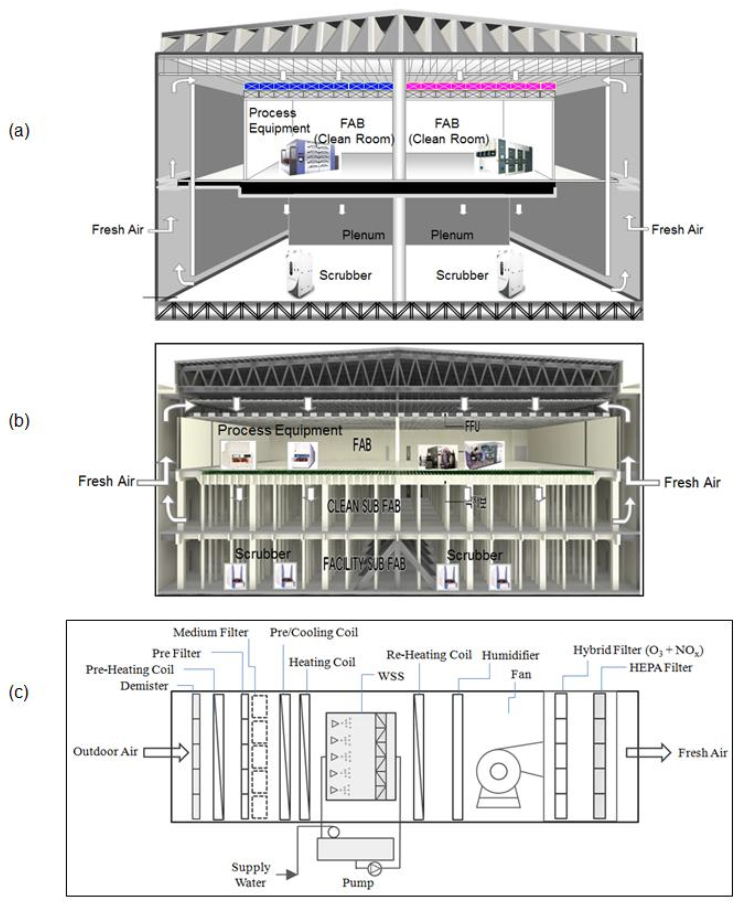
 DownLoad:
DownLoad: 